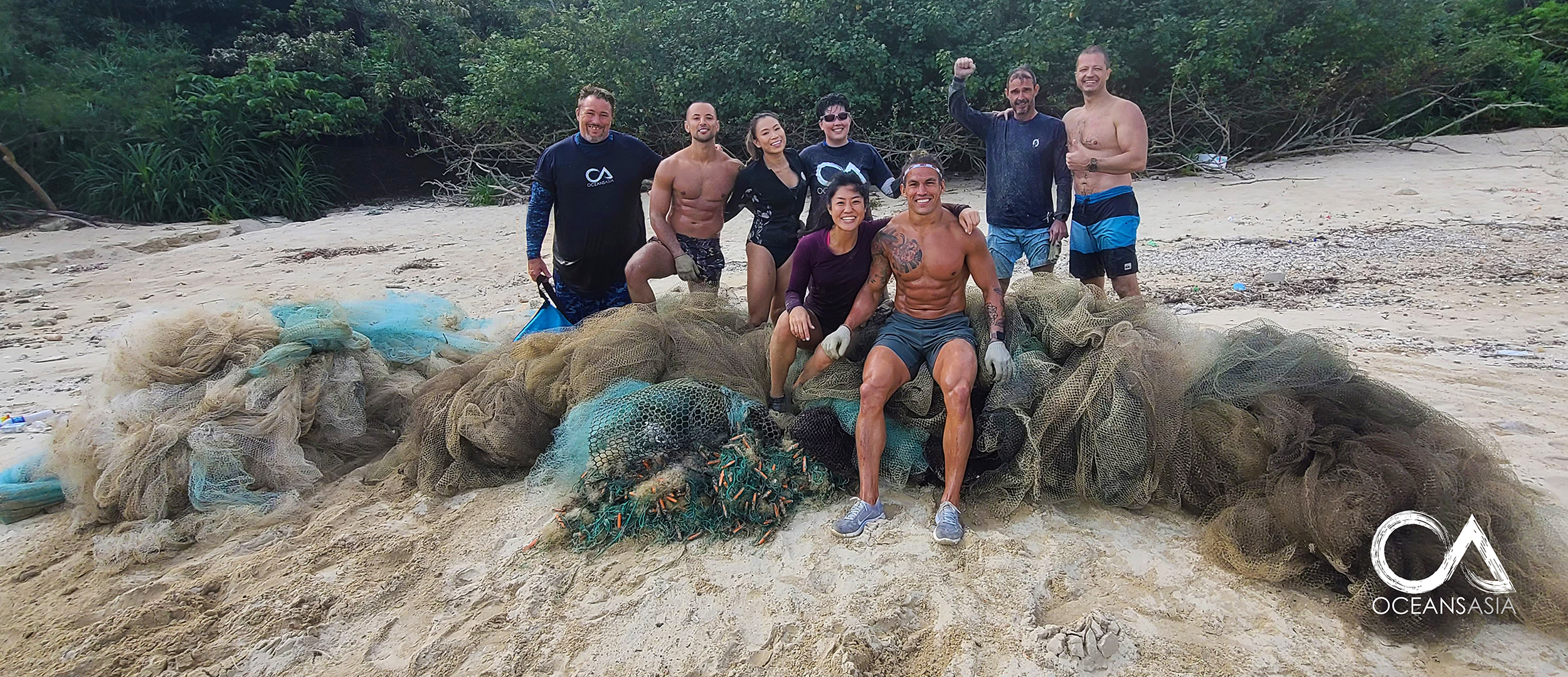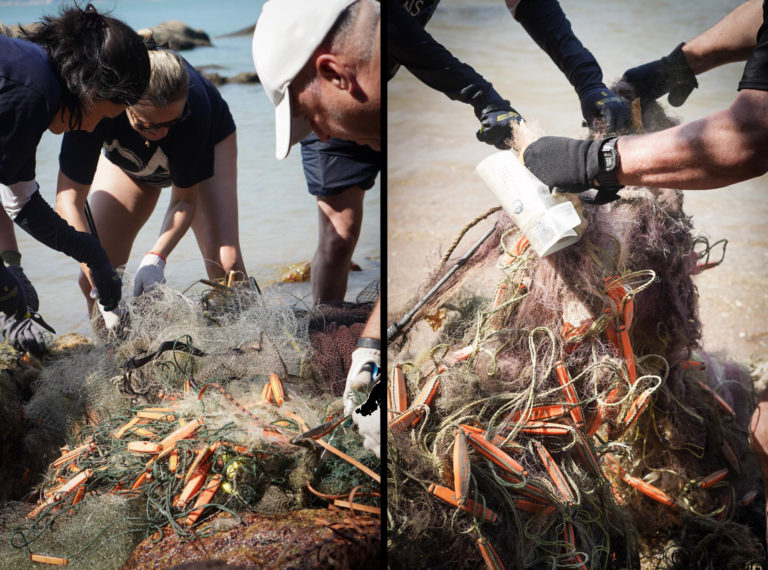
Ghostnet Recovery - South Lantau, Hong Kong
We officially launched our GHOSTNET HONG KONG campaign early 2021, after several productive recovery actions in 2019 and 2020. With COVID-19 restrictions relaxing in Hong Kong, we have been heading out to the waters along South Lantau Island from May to December, running two large trips per month, with an average of 25 volunteers each time on a chartered junk boat.
“It has been fascinating to see how motivated people get when they see the issue first hand and know that they are in the right place to be able to make a difference” says Gary Stokes, Operations Director for OceansAsia.
On average, we have managed to recover between 1-2 tons of fishing net on each ghostnet mission. All of these hauls have been from a small stretch of Hong Kong’s very large coastline so it’s terrifying to think how much abandoned fishing gear lines our coasts.
“Never doubt that a small group of thoughtful, committed, citizens can change the world. Indeed, it is the only thing that ever has.”
― Margaret Mead

SO WHAT ARE GHOST NETS?
Ghost nets or ghost fishing gear is abandoned fishing nets found in the oceans of the world. The nets are either lost at sea, caught on rocks and un-retrievable or intentionally dumped at sea after reachinga point where they are so damaged they are no longer of any use to the fishermen.
Many of these nets are gillnets which are lightweight mono-filament plastic nets. These have become so cheap to produce that they are almost considered “disposable.” They are composed of small orange or yellow plastic floats that hold the top of the net wall up underwater. Along the bottom of the net wall are small lead weights to help hold it the seafloor. These nets are used to target small fish that get caught in the mesh by their gills, hence the name “gill nets.” Another common target victim are crabs such as the blue swimmer crabs we find around our coastlines that are popular in local seafood restaurants. Sadly, these gill nets claim many other unintended victims such as turtles, porpoise of the Chinese white dolphins.

The threat that ghost nets pose to the marine environment is significant. They are designed to kill, and they continue killing long after they are abandoned. Animals caught in these nets then become potentially and easy meal for other animals which in turn also get caught and then die. The more dead animals in a net, the more attractive the nets becomes to other predators.
Gill nets are not the only nets we find, large purse seine and trawler nets are found in the shallow waters, or wrapped around undersea rocks and seamounts. These do not often have floats, rather they move along the seabed on ocean currents until becoming caught on rocks. This process scours and disrupts benthic (sea bottom) habitat. Like the gill nets, these nets continue killing marine wildlife. They will continue to kill wildlife for hundreds of years, or until they are removed from the environment, as these plastic nets are very durable.
THANK YOU
We would not be able to achieve these fantastic results without your support. OceansAsia would especially like to thank Tim & Jen Wannenmacher, Veronica Chang and Sara & Rex of Floatudio junks who make these trips possible.
